
<Santiago de Chile Trip>
Last year, I undertook a study trip to Chile. The original plan was to visit centers of contemporary architecture and embark on an adventurous journey to Patagonia. After two months of incredible experiences, I decided to stay and gather more professional and life experiences. I have long pondered how to convey this country to readers back home and from a European perspective. From the available tourist information, travelers learn about the progressively growing economy and a safe country with understandable laws and regulations. The reality is more complex. The enormous gap between social classes shocks our fellow countrymen, creating significant tension and division in society.
The capital city is the center of economic activity, home to a third of the country's population. The vast majority of architects have their studios here, and it is quite common to travel for projects or construction thousands of kilometers by plane. For the regions, the centralization of political and economic power in the metropolis is a problem, but there are still interesting buildings and architects in other areas, especially in the ports of Valparaíso and Concepción. The linguistic affinity of surrounding countries allows for collaboration among architects and joint projects across the continent. Different local conditions and specific legislation in each state always require cooperation with a local studio.
Santiago is a city founded in the 16th century by Spanish colonizers in the wetlands of the Mapocho River in a spacious plain surrounded by mountains on all sides. The basic layout consisted of 126 blocks with a square footprint measuring 100m on each side. The streets were laid out parallel to the cardinal directions, and the main square was created simply by omitting one block. The city has been destroyed several times by raids from warring indigenous tribes. Later expansions were carried out in line with the original plan, although the size of the blocks and the orientation of the grid change slightly. Today, the city has about 6 million inhabitants. Compared to Berlin, it covers half the area, yet its population is nearly double. The city is of medium size by South American standards. The problems of such high density include significant pollution, enormous traffic congestion, and polarization of the city into a wealthy (eastern) and poor (western) part.
The two most significant faculties of architecture are at the Universidad de Chile and Pontificia Universidad Católica. Although these are public schools, education is paid, and with a bit of hyperbole, we can talk about educational enterprises in which the state has a stake. Prices for one semester are around one hundred thousand crowns. The degree obtained is then indicated by architects after their names along with the abbreviation of the school from which they graduated. The first aims to be a people's school and, through scholarships and grants, allow study to the widest possible circle of citizens, thereby connecting with the socialist era when education was free. It is a prestigious school, and its graduates are world-renowned architects like Alejandro Aravena (studio Elemental) or brothers Albert and Ian Tidy (studio Tidy arquitectos). Católica is an elite school with a special connection to the Catholic Church. Notable alumni include Smiljan Radić, Cecilia Puga, Sebastian Irrarázaval, and Mathias Klotz.
The tradition of construction in Chile is well reflected and represented by buildings in the International Style from the 1930s and 1940s. Thanks to immigrants from Europe, there is a strong foundation of quality buildings from this era. The architecture of the socialist era is represented by experimental collective housing estates and public buildings in the brutalist style of the 1960s. In the 1970s, a military junta led by General Pinochet came to power, and due to lively trade relations with Western Europe and the United States, shopping centers, residential condominiums, and high-rise office buildings emerged for a certain layer of society.
The economic success of the 1990s is embodied in the construction of the business district skyscrapers, colloquially nicknamed Sanhattan. (fig. 1-7) Last year, the new city landmark, the Gran Torre Costanera, was completed, reaching a height of 300m designed by Argentine architect César Pelli and the Chilean studio Alemparte Barreda. It surpassed the Titanium Tower, which had dominated the city for four years by one hundred meters. Another interesting ongoing construction is the Torre Alto El Golf by Handel architects and UNO arquitectos (fig. 6). Additionally, I present an overview of recently completed public buildings. The cultural center GAM (fig. 1 and 11) was created by renovating a damaged building of the Ministry of Defense. In an open competition, the project by Cristian Fernandez Arquitectos and Lateral Arquitectura won and was completed in 2006. Other contemporary buildings include the Design faculty and library in the Lo Contador campus of Pontificia Universidad Católica by Sebastián Irarrázaval and Theodor Fernández (fig. 13 and 14). The main library of Universidad Diego Portales by architect Mathias Klotz (fig. 15) rounds out the list of university buildings. An essential realization is the Museum of Memory (Museo de la Memoria) from 2010. In the competition for this building, the Brazilian studio Estudio América won. The architects chose the form of a monumental block – a bridge. The museum contains an extensive exhibition mapping human rights and crimes of the past totalitarian regime.
Chile is a vibrant country where construction, design, and building happen rapidly, and where new architecture emerges every day.
The capital city is the center of economic activity, home to a third of the country's population. The vast majority of architects have their studios here, and it is quite common to travel for projects or construction thousands of kilometers by plane. For the regions, the centralization of political and economic power in the metropolis is a problem, but there are still interesting buildings and architects in other areas, especially in the ports of Valparaíso and Concepción. The linguistic affinity of surrounding countries allows for collaboration among architects and joint projects across the continent. Different local conditions and specific legislation in each state always require cooperation with a local studio.
Santiago is a city founded in the 16th century by Spanish colonizers in the wetlands of the Mapocho River in a spacious plain surrounded by mountains on all sides. The basic layout consisted of 126 blocks with a square footprint measuring 100m on each side. The streets were laid out parallel to the cardinal directions, and the main square was created simply by omitting one block. The city has been destroyed several times by raids from warring indigenous tribes. Later expansions were carried out in line with the original plan, although the size of the blocks and the orientation of the grid change slightly. Today, the city has about 6 million inhabitants. Compared to Berlin, it covers half the area, yet its population is nearly double. The city is of medium size by South American standards. The problems of such high density include significant pollution, enormous traffic congestion, and polarization of the city into a wealthy (eastern) and poor (western) part.
The two most significant faculties of architecture are at the Universidad de Chile and Pontificia Universidad Católica. Although these are public schools, education is paid, and with a bit of hyperbole, we can talk about educational enterprises in which the state has a stake. Prices for one semester are around one hundred thousand crowns. The degree obtained is then indicated by architects after their names along with the abbreviation of the school from which they graduated. The first aims to be a people's school and, through scholarships and grants, allow study to the widest possible circle of citizens, thereby connecting with the socialist era when education was free. It is a prestigious school, and its graduates are world-renowned architects like Alejandro Aravena (studio Elemental) or brothers Albert and Ian Tidy (studio Tidy arquitectos). Católica is an elite school with a special connection to the Catholic Church. Notable alumni include Smiljan Radić, Cecilia Puga, Sebastian Irrarázaval, and Mathias Klotz.
The tradition of construction in Chile is well reflected and represented by buildings in the International Style from the 1930s and 1940s. Thanks to immigrants from Europe, there is a strong foundation of quality buildings from this era. The architecture of the socialist era is represented by experimental collective housing estates and public buildings in the brutalist style of the 1960s. In the 1970s, a military junta led by General Pinochet came to power, and due to lively trade relations with Western Europe and the United States, shopping centers, residential condominiums, and high-rise office buildings emerged for a certain layer of society.
The economic success of the 1990s is embodied in the construction of the business district skyscrapers, colloquially nicknamed Sanhattan. (fig. 1-7) Last year, the new city landmark, the Gran Torre Costanera, was completed, reaching a height of 300m designed by Argentine architect César Pelli and the Chilean studio Alemparte Barreda. It surpassed the Titanium Tower, which had dominated the city for four years by one hundred meters. Another interesting ongoing construction is the Torre Alto El Golf by Handel architects and UNO arquitectos (fig. 6). Additionally, I present an overview of recently completed public buildings. The cultural center GAM (fig. 1 and 11) was created by renovating a damaged building of the Ministry of Defense. In an open competition, the project by Cristian Fernandez Arquitectos and Lateral Arquitectura won and was completed in 2006. Other contemporary buildings include the Design faculty and library in the Lo Contador campus of Pontificia Universidad Católica by Sebastián Irarrázaval and Theodor Fernández (fig. 13 and 14). The main library of Universidad Diego Portales by architect Mathias Klotz (fig. 15) rounds out the list of university buildings. An essential realization is the Museum of Memory (Museo de la Memoria) from 2010. In the competition for this building, the Brazilian studio Estudio América won. The architects chose the form of a monumental block – a bridge. The museum contains an extensive exhibition mapping human rights and crimes of the past totalitarian regime.
Chile is a vibrant country where construction, design, and building happen rapidly, and where new architecture emerges every day.
The English translation is powered by AI tool. Switch to Czech to view the original text source.


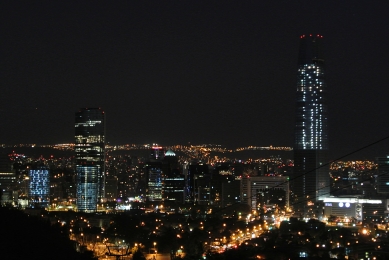
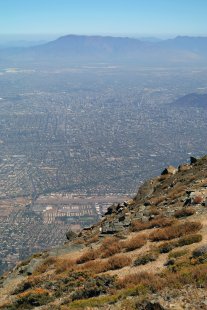

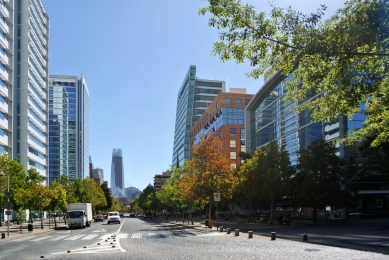
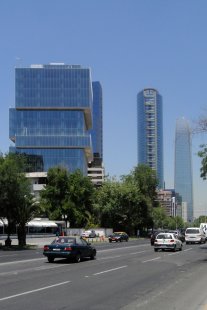



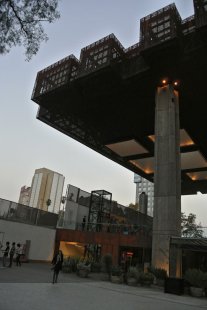
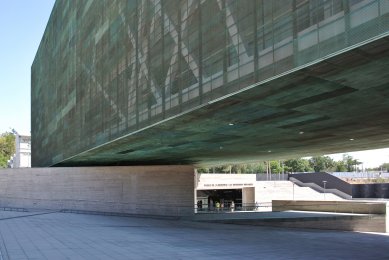


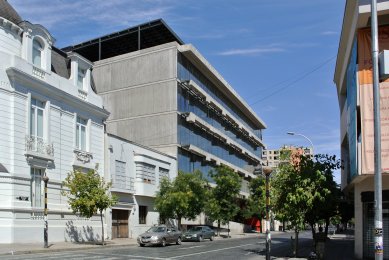
0 comments
add comment










